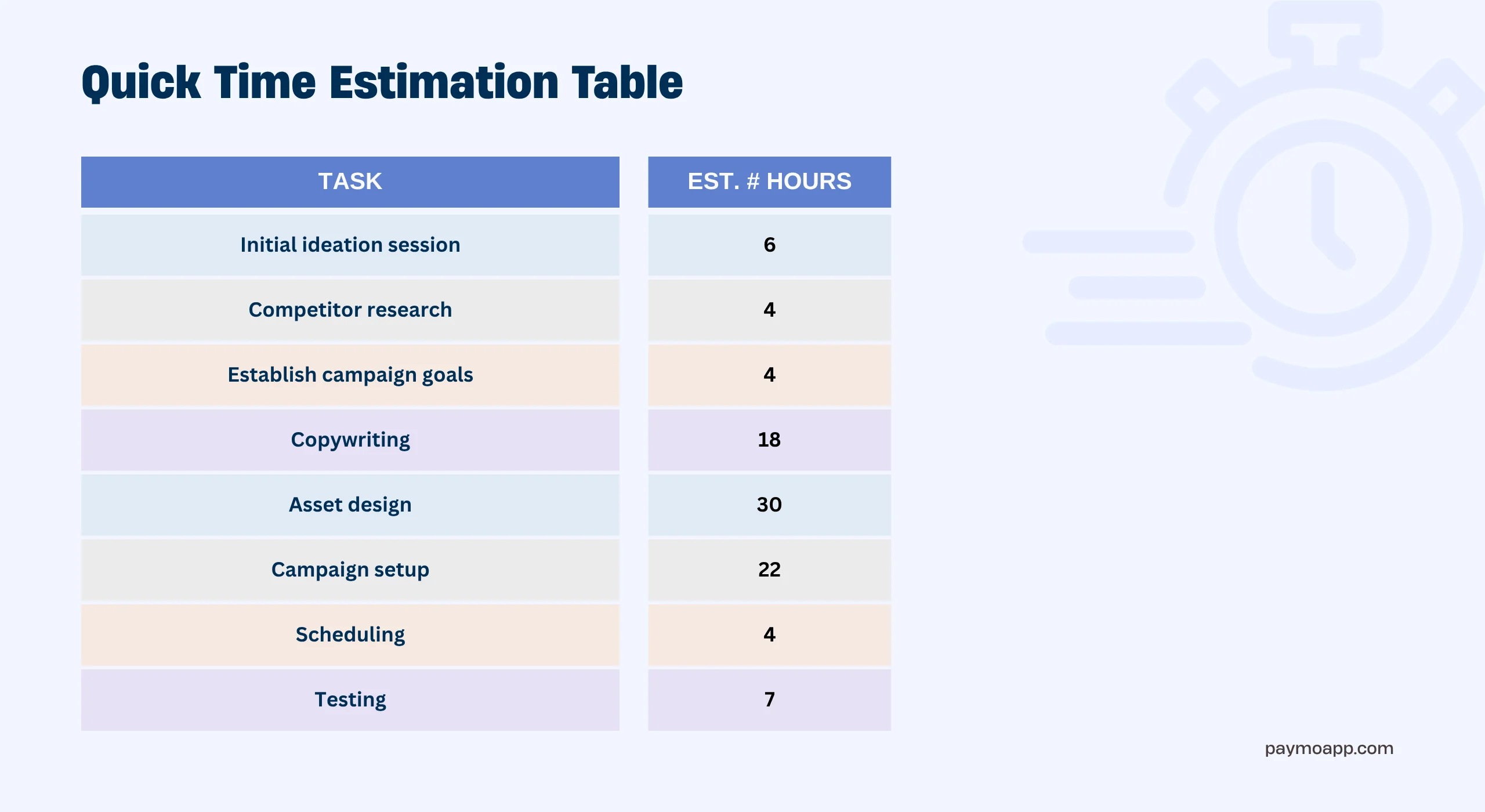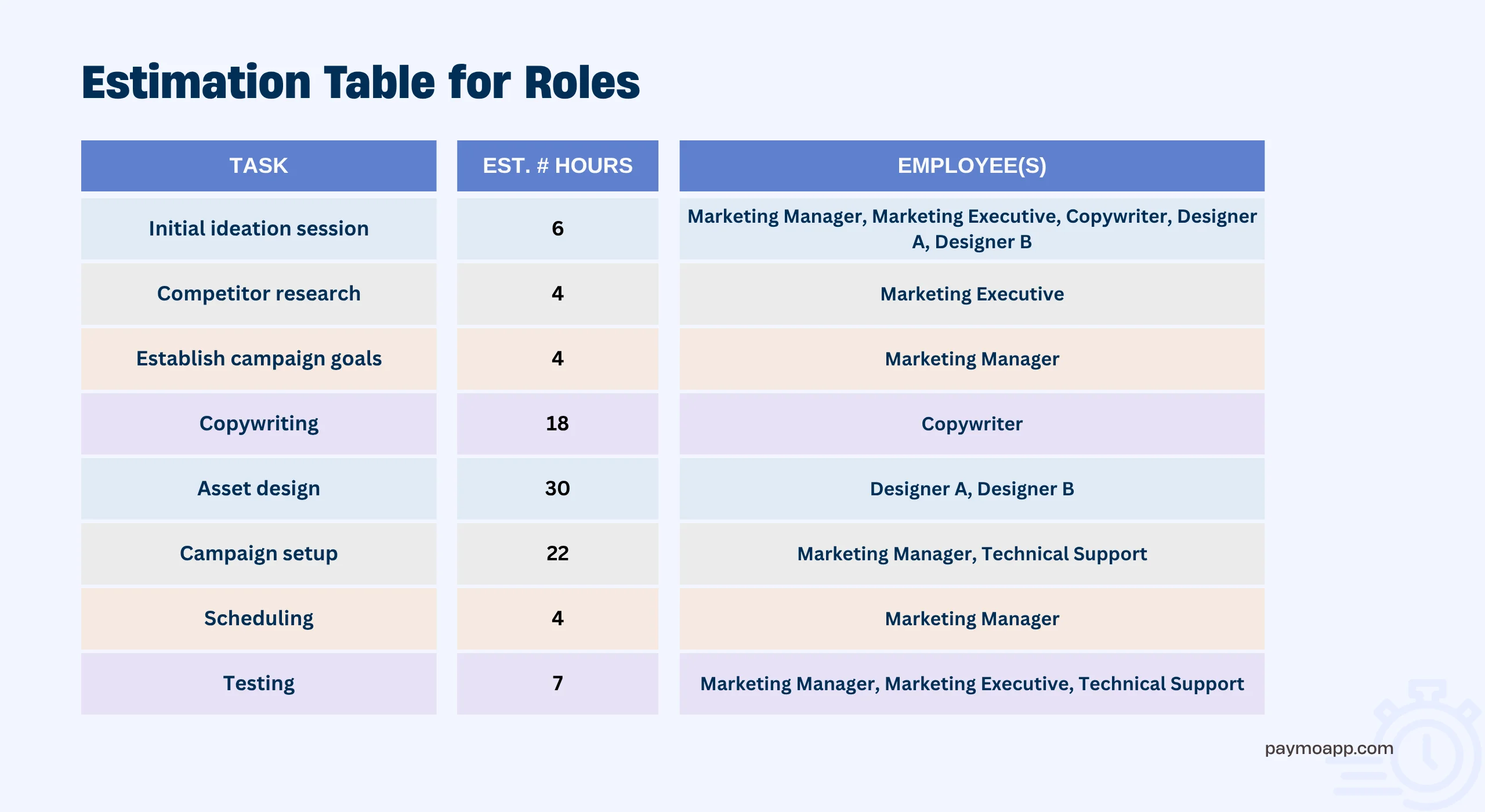From unplanned meetings to endless email chains, many businesses fail to realize just how many hours are slipping through the cracks when executing marketing campaigns and tracking campaign ROI.
Time tracking data has shown that the US economy loses 50 million hours of productivity per day due to unrecorded work activities – time that is being taken away from chargeable work and business growth.
Introducing accurate time tracking processes not only helps employees better structure their day and manage their workload, but can also help your business improve its return on investment (ROI).
In fact, following the implementation of time tracking systems, 31% of businesses have reported a positive increase in their ROI within as little as six months.
In this article, we’ll discuss exactly how time tracking can improve your ROI, along with a step-by-step guide on how your business can implement time tracking processes for itself.
How time tracking can impact campaign ROI
Campaign ROI is typically measured with an easy-to-use formula that can help your business track the success of a campaign. The formula for ROI is as follows:
ROI = income from campaign / cost of campaign x 100%
Although this formula is a great way to work out how profitable your marketing campaign has been overall, it fails to take all factors into consideration.
The number of hours spent working on the campaign is not accounted for and can skew the results, often making a campaign appear more profitable than it actually was. The hours spent planning a campaign, creating assets, scheduling content, and reporting on success all add up, costing your business time and money.
This is why tracking time is an important part of a marketing campaign’s success, as it provides a more accurate insight into the ROI.
There are various tools available to help accurately break down expenses by incorporating the number of working hours spent on a project. For example, the Paymo app records the time spent by employees, comparing this against the estimated and billed hours to see how profit margins are being affected.

Source: Paymo
Different businesses have different approaches to time tracking – some choose to manually track the time spent on each task, some opt to create a custom app to speed up the process, and some turn to all-in-one platforms like Paymo to manage client projects from start to finish.
Let’s discuss both solutions…
Setting Up Manual Campaign Time Tracking
For businesses that are smaller in size or are working with stricter budget restraints, accurate time tracking is still perfectly achievable. Here are 5 steps you can follow to implement time tracking measures into your team:
1. Break down the campaign into smaller tasks
When planning your next marketing campaign, time tracking will become much more manageable if the project is broken down into chunks.
These smaller tasks will make it much easier to establish realistic time frames and decide on a realistic launch date to work towards. This also makes the process much less overwhelming for your team and will ensure everyone knows exactly what work needs to be done.
Some key tasks to include in the breakdown of a new marketing campaign will include creative brainstorming, setting goals, copywriting, asset design, setup, and testing.
2. Estimate the time needed for each task
Once the different stages of the project have been established, adding a timeframe to each will enable the workload to be scheduled.
Here is an example of a basic template that can be used to break down the tasks into manageable chunks and make time estimations more precise:

To make the time estimates as accurate as possible, consider the timelines of previous campaigns and consult with the team members who will be actively involved in the work’s execution.
If you make blind estimates, this will likely have a knock-on effect throughout the whole campaign and cause delays. Not only will this hold up the launch date, but it can also cause a lot of stress and frustration among your team.
3. Assign each task to members of the team
Before your team gets to work on the marketing campaign, it is important that each employee knows what their role is.
By allocating the tasks among the team before the campaign starts, this will avoid certain employees being overwhelmed with the workload while others fail to contribute enough.
Not only will this ensure that each task is carried out by those with the best skill set for the job, but it will also help you monitor the campaign’s progress. If everyone has an assigned set of duties, there will be a sense of ownership and teamwork that helps the project run smoothly and avoid overlaps.
At this stage, the template used in step two can be expanded:

4. Choose the most relevant time tracking tool
There are a countless number of different time tracking tools on the market, each offering different features which have been catered to different business needs and pain points.
The tool you choose to use can transform the running of your campaigns, so there are some key considerations to make to ensure you pick the best option for your business:
- Number of employees. For bigger businesses with complex departmental structures, having a time tracking tool that caters to large-scale projects is a necessity.
- Software integrations. The tool you choose needs to be compatible with any existing software, whether that be project management tools or reporting software.
- Budget restraints. Although free tools are available, they often restrict features and may not suit your business as it grows. Comparing different paid plans will help establish necessities and ROI opportunities.
- Usability on the go. If your business operates remotely or has employees who need to access the time tracking tool from site visits or while traveling, the interface must be compatible with various devices.
A popular example of a time tracking tool used by various marketing teams and agencies is Paymo. The app allows users to select the task they’re working on to start the web timer, which automatically updates their timesheet. In addition to managing individual time sheets, it monitors project progress to enhance collaboration and identify bottlenecks.

Source: Paymo
5. Continually monitor the time logs
Once the planning has been carried out and your time tracking tool is good to go, that is not the end! A successful campaign requires continuous monitoring and improvement.
Both you and the rest of the team need to keep an eye on the progress of the project to ensure that timings are on track and any issues are raised in a timely manner. If any potential delays are identified, changes may be needed to the upcoming task deadlines or the employees responsible for each job to ensure that the launch date is not impacted.
Not only does continuous time tracking keep the current campaign running smoothly, but the data can be used to inform future campaigns.
Creating a custom web app for time tracking
Many businesses, especially nowadays, find that they outgrow their time tracking tools or need to upgrade their manual processes for a more efficient approach.
Building a custom web app enables your business to create a solution tailored to your team’s needs, enhancing everyday operations for employees. From tracking the progress of a project to managing the workload of each individual employee, this can transform the way your business operates and help improve the profitability of your marketing campaigns.
To create a time-tracking web app that aligns with the needs of your business, you first need to establish your goals. Catering the web app to the size of your business, the way your campaigns are managed, and the way you record timings, as well as ensuring it will scale alongside your business growth, will offer a long-term solution that takes project management to the next level.
By building your own custom solution, you can be sure that the web app is closely aligned with the needs of your team. Using the metrics of your choice and laying out the system in a way that aligns with existing processes will make the transition significantly easier for employees to get the hang of.
Improving your campaign ROI through time tracking
Accurate time tracking is not just a way to see what employees have been working on, but a strategic move that can help your business improve the ROI of your marketing campaigns.
Whether you choose to create a custom web app to make everyday processes more efficient or introduce a time-tracking tool to help manage campaigns, the added organization is bound to have a knock-on effect on the project’s success.

Download Paymo Track for free.
By starting every campaign with a clear idea of what tasks need to be carried out, how long they’ll take, and who is responsible for them, you can maximize time and manpower to improve the profitability of your marketing campaigns.
If you’re looking for a good place to start, the Paymo all-in-one tracking system is offering a 14-day free trial as well as 40% off for the first three months.

Rebecca Barnatt-Smith
Author
Rebecca is a marketing expert at Solvid Digital. She specializes in small business strategy and has written for a number of large marketing and business publications such as Envato and Maddyness.

Alexandra Martin
Editor
Drawing from a background in cognitive linguistics and armed with 10+ years of content writing experience, Alexandra Martin combines her expertise with a newfound interest in productivity and project management. In her spare time, she dabbles in all things creative.

